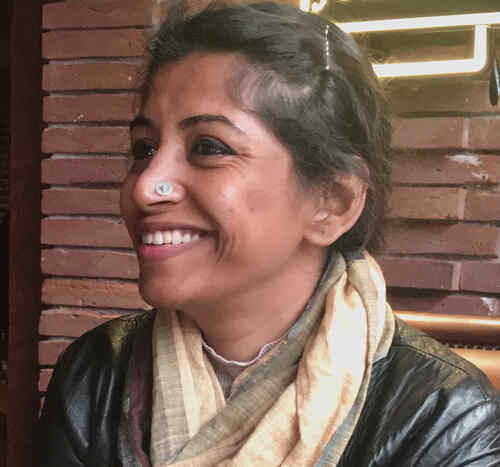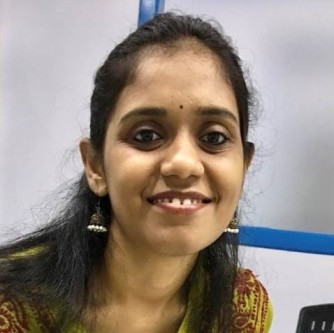In Bhandara and Gondia districts of Maharashtra’s Vidarbha region, members of the Dheevar fishing community look for a sign in the water to know when it’s time to till the land. It appears on the belly of a freshwater fish—the 4-cm-long kalvali—as a thin orange line that informs them it’s fish breeding season. The mark also tells them that the monsoon is five or six days away. “Around here, one way to inquire if it’s time to start sowing paddy is to ask ‘Kya kalvali ne shringar kar liya hai?’ (Has the kalvali adorned herself yet?)” says Manish Rajankar. Manish serves as director at the Foundation for Economic and Ecological Development (FEED), an organisation whose work in natural resource management draws heavily on the traditional knowledge of local ecological processes as well as the decades-old social, cultural, and economic practices that have evolved in response to them.
Traditional knowledge is what has helped the fishing cooperatives of Bhandara and Gondia revive their inland lakes and tanks, restore their biodiversity, and enhance their livelihoods. “It’s not the weather alone that people can read in the blooming of flowers and fruits, or in the changes that come over animals’ physical features,” Manish says. “Traditional knowledge extends to the life and health of all species, and their relationship with the environment in its entirety. This knowledge has no boundaries; it connects with and is influenced by every aspect of the natural world.”
And yet, traditional or grassroots knowledge is bound not only by cordons of class, caste, gender, religion, and region, but also by hardened precepts that determine what constitutes knowledge and its place on the ladder of legitimacy. Entrenched systems of power privilege literacy over lore and laboratories over lived experience, assigning a greater value to academic knowledge than to wisdom found outside formal institutions—in the homes and fields of people.

Now, a consortium of more than 40 development organisations led by the nonprofit CORO India is working to reverse this systemic, centuries-old othering. These organisations, which CORO has worked with for several years, have come together to establish Atta Deep—a decentralised academy of grassroots leadership that will gather and archive community knowledge and instate it within academia as a field of scholarship.
“Lived experiences of grassroots communities and their authentic interpretations of those experiences are pivotal to knowledge building,” says Sujata Khandekar, founding director at CORO. “Atta Deep, or the Academy of Grassroots Leadership (AGL), is conceptualised as a platform that celebrates grassroots actors as holders and producers of knowledge, and stands for their right to knowledge building. It challenges the politics of exclusion that prevails in research and academia to make these domains equitable, just, and democratic.” By doing so, Atta Deep aims to establish grassroots knowledge and grassroots leaders as legitimate stakeholders of the formal knowledge building enterprise, from which both have been historically and intentionally left out.
What is grassroots knowledge?
A community’s lived experience, along with its interpretation and critical reflection of that experience, forms the building blocks of grassroots knowledge. It is gathered from people’s ways of knowing and disseminated through their distinct modes of cultural expression, empowering them collectively and politically in the process. “This knowledge is an incremental and gradual assimilation of trends hypothesised over time and cause–effect relationships. And these relationships have neither been formally experimented with nor documented but have been passed by word of mouth to successive generations,” explains Sujata. Reading and writing alone don’t imply knowledge, she emphasises. “Grassroots knowledge is marked by sharing the power of inquiry with the grassroots and their collectives; and by valuing experience over formal education, free-flowing narratives over academia’s close-ended interviews, fluidity and flexibility over its rigidity, subjectivities over objectivity, research processes over research agenda, the relationship of trust and comfort over transactional relationships, and trusting the analysis of grassroots actors themselves.” In this way, grassroots knowledge contrasts academic knowledge, which is systematically built through observation, experimentation, and formal documentation.
People at the grassroots are not passive beneficiaries of urban, academic knowledge.
Grassroots knowledge is also an articulation of social change processes. It is shaped by, and in turn shapes, people’s lived experience—the wheel that takes them through the routine of their daily life, as well as the lever that catapults them to new thinking and action. Adapting to new circumstances and challenges, people channel their traditional knowledge towards mobilisation strategies to bring about change in their communities. Contrary to prevalent notions, people at the grassroots are not passive beneficiaries of urban, academic knowledge, but self-actualising actors spurred by what they themselves know.
However, people at the grassroots view things differently. “They don’t consider what they know as ‘knowledge’. They simply view it as a way of life, as what comes naturally to them,” says Shital Sathe, shahir (balladeer) and activist, whose cultural platform Navayan Mahajalsa—which is part of the Atta Deep alliance—advocates for sociopolitical reform and promotes constitutional values through its art. The collective also runs Jalsa Studio, where songs for social change—written and performed by the folk artists of Navayan—are recorded.

“When we come across a particular community’s knowledge, we recognise it as valuable and different from what we know,” Shital says. “As community leaders, it’s our responsibility to enable people to understand the value of their knowledge; we work for this self-realisation. Our aim is to change the perception that grassroots knowledge is inferior, that it does not constitute ‘real’ education. We want to get rid of this discrimination and bring local knowledge—which includes language, music, and culture—into the mainstream.”
Across the country exists a rich tapestry of such knowledge that is actively utilised in everyday life, as well as in community development and problem-solving. “Different regions have different folk arts, songs, and proverbs that offer a glimpse into local traditional knowledge,” Manish notes. “This knowledge largely relates to the environment and the natural resources around which people shape their lives and livelihoods.” When the Dheevars, for example, noticed the orange band of the kalvali, they also observed a trend: the line was linked to the change in seasons. And without formally documenting the observation or theorising about it, they interpreted it as a signal to start preparing the field, thus developing a local weather forecasting system that is unique to that ecosystem and society. This knowledge becomes even more singular because of the mediums through which it is creatively expressed: proverbs, riddles, jokes, games, and songs that have a signature linguistic and cultural stamp.

Why preserve grassroots knowledge
What people know about their environments and the language and tools they develop to navigate them has utilitarian benefits as well as social and cultural value. These advantages accrue not just to themselves and their families but also to society and the environment.
Here are some of the benefits:
1. Livelihood security
In Vidarbha, FEED has developed a model of income generation that is coupled with environmental sustainability. When the organisation saw that fish production in the local ponds had declined, it realised that the ecosystem within the ponds itself had collapsed.
“For the ponds to survive, it was necessary to have different types of flora and fauna,” says Manish. “The botanists and zoologists we spoke to could theoretically tell us what was needed to bring the ponds back to life. But to make it work on the ground, we had to sit with the community and learn what kind of soil the ponds needed, what to plant in it and at what depth, and so on. The community had this information already. And so, we worked with them and in two years restored the ponds’ ecosystem and brought them back to life. We then replicated this method in 30–40 villages.”
They reintroduced indigenous varieties of fish such as shingur, dadak, savada, and motihari, which commanded a higher price than the fast-breeding but less nutritious ‘government fish’ such as catla, mrigal, and rohu, as well as exotic species such as grass carp and common carp that the ponds had been populated with through a state-sponsored scheme. The intervention worked, and as the ponds flourished, traditional livelihoods did too.
“If we create profitable models around traditional livelihoods, the youth will be drawn to them too. They will realise that if they return to indigenous knowledge and work, the problem of sustaining themselves in a rural environment will also be addressed,” Manish notes.
2. Preservation of cultures
“The traditions and languages of every community make up their identity. When a language dies, part of a culture dies too. English is international and Hindi is spoken across the country, but the language of a village ends at its boundaries,” Shital observes. “By documenting traditional knowledge in local languages, we are attempting to preserve these cultures, identities, and histories.”
Histories and mythologies, she points out, are preserved not only in books and monuments, but in various expressions of culture. Aaradhi, a genre of worship songs sung to the devi or goddess in Maharashtra, is one such preserve. “These songs contain the history of our matriarchal society,” says Shital, who belongs to the eponymous Aaradhi community that has traditionally sung these songs. “We are preserving our culture by collecting and safeguarding songs as well as the disappearing social history and craft techniques of folk instruments. How is the bimani or the tabla made? Where does the leather come from? And the wood? Which animal’s skin is used to make these instruments, and where is that animal found? Jalsa Academy has been documenting this knowledge.” Shital says that her group plans to eventually establish a museum of musical instruments used in rural Maharashtra.
3. Development solutions emerge
Archiving traditional knowledge is more than just an ethnographic exercise. It offers up the opportunity for social workers within and outside a region to co-create community-led development solutions. These may stand a higher chance of success than air-dropped interventions, not only because they draw on an intrinsic understanding of local realities and local resources to engineer local solutions, but because these solutions may enjoy a better buy-in from the community, being self-generated.
“When we go into a community as experts to solve a problem, we do not find a solution. But if we try to solve the problem with the help of people’s knowledge, we accomplish solid work,” Manish notes. “Co-created interventions that combine modern knowledge and technologies with traditional knowledge will often yield more innovative results.”
Moreover, the diversity of social realities in India has produced an equally broad spectrum of solutions to common challenges.
“We have compiled case studies of three different communities that have fought for forest rights,” says Sujata. “Each community has spoken about the circumstances they faced before they acquired these rights, the processes they followed to acquire them, and what life looks like now that they have the rights. The case studies cover completely different social contexts and offer three distinct approaches to the same problem.”
4. Dignity building
People achieve a sense of dignity when they can thrive by their traditional knowledge. “This is particularly true of vulnerable and marginalised castes deprived of social, political, and economic power,” Manish says. “When they are made aware of the power of their knowledge and find ways to apply it in their work, they develop self-respect.”
A sense of dignity can help cultivate a strong sense of responsibility and ownership of communal challenges. Developed further, people’s newfound confidence and leadership may find ways to solve larger problems of social justice, livelihood, and the environment.

From the margins to the mainstream
Not all lived experiences can be classified as knowledge. According to Atta Deep’s vision statement, a knowledge system constitutes ways of knowing, analysing, expressing, and negotiating a subject. It falls to grassroots leaders to identify knowledge streams and then undertake the work of formally building them out through conversations with the community. Here are the stages of the process:
- Locate, track, and document knowledge in various forms: text, art, material, audio, and videos.
- Undertake participatory, collaborative research on select themes. To start, Atta Deep will begin gathering knowledge under the broad domains of gender, natural resources, human rights, and livelihood.
- Facilitate dialogue and collaboration with policymakers, philanthropists, foundations, and academia to integrate grassroots wisdom with their projects.
- Establish grassroots knowledge through curricula and disseminate it through publications, events, conferences, and seminars.
Ultimately, the knowledge that comes from the people must return to the people.
“This is why it has to be documented in the people’s language, via mediums they are comfortable with,” Sujata says. “They will only gain confidence from this exercise when they see, read, or listen to and understand the archive themselves. If we document it in English, only for those outside the grassroots, our work will be incomplete. Additionally, the authorship of this knowledge must remain with community protagonists, and it must facilitate collective empowerment.”
If the process of documentation looks within the community, strategies for dissemination must look outside.
Sujata says, “We’re simultaneously building bridges with people in government, media, academia, funding, and policymaking so that they understand this wisdom and experience and absorb it into their social change processes.” To enable the lessons of traditional wetland management, forest rights movements, and anti-caste protest songs to travel beyond the village, they must be institutionalised and their material organised and structured into disciplines of study.
Shital’s group, for example, is developing a course on shahiri, whose curriculum will cover the tradition’s origins, history, branches, and so on. “But even if we teach it to people, will the certificate we offer be accepted as a valid document when they seek jobs, or as proof of their learning? This is why we need to collaborate with government and non-government institutions—they have the networks and resources to help spread our knowledge further,” she points out.
And it is only when courses on grassroots knowledge become part of a university programme and reach more people will the knowledge hierarchy be abolished, they believe.
Challenges to institutionalising grassroots knowledge
The campaign to establish a grassroots knowledge system that is fully and fairly representative of the people is not without its challenges, both from within and outside the grassroots itself. Here are some of them:
1. Centring marginalised voices
“When women assume leadership positions, those in power—whether at home, in society, or in politics—feel uncomfortable and try to halt their growth,” says Manish. “A similar conflict arises when people from marginalised castes and tribes try to assert themselves through their knowledge.”
Even though they hold specialised knowledge, historically oppressed communities are denied dignity.
Shital refers to the caste discrimination that tamasha artists face when they tour villages on a jatra (itinerant theatre). “At night, people clap after their performance, but during the day, it becomes difficult for them (the artists) to get bathing and drinking water in the same village. And food is served to them in separate vessels, outside in the courtyard,” she says, based on interviews she has conducted with 31 tamasha artists.
Even though they hold specialised knowledge, historically oppressed communities are denied dignity or the agency to demonstrate that expertise outside of sanctioned spaces, due to entrenched power structures.
“But a collective can stand up to people in power,” says Manish. “That’s what grassroots leadership should attempt to do—rally collective support for marginalised voices. It’s important to remember that the process of leadership starts with an individual but mobilises the entire community and society.”
2. Locating knowledge
Traditional knowledge is not always immediately obvious. Development workers from outside the village are accustomed to perceiving things in a certain way and unfamiliar with the specialised terminology villagers may assign to phenomena. And so they may not easily grasp the meaning and significance of local terms and concepts. “For example, if someone from the village says, ‘Apko ye machali asalpani me nahi milegi,’ it means, ‘You will not find this fish in that part of the wetland where the water has depth and colour.’ The local term for this is asalpani. Helping an outsider understand this is where the challenge of documenting and institutionalising local knowledge lies,” says Manish.
3. Institutional barriers
Because the hierarchy of knowledge is so deeply entrenched in society, it will take long and persistent conversations with mainstream institutions to convince them to make room for grassroots wisdom.
“Our formal institutions are neither willing nor equipped to embrace this kind of thought. They have always seen grassroots people as nothing more than a data source and will say, ‘Oh, yes, this is good, but the grassroots can’t think this way,’” Sujata warns. “They always doubt the local community’s capabilities. This thinking must be challenged, but it may take another 20–25 years to change.”
When that happens, the wisdom of memory-keepers, storytellers, healers, music-makers, and problem-solvers will cohabit with the knowledge of scientists and academics in a new kind of university, that is diverse, inclusive, and truly universal.
—
Know more
- Read this interview to understand how a paradigm shift around knowledge can be achieved.
- Read this study to learn about the value of grassroots innovation and what can be done to promote it.





